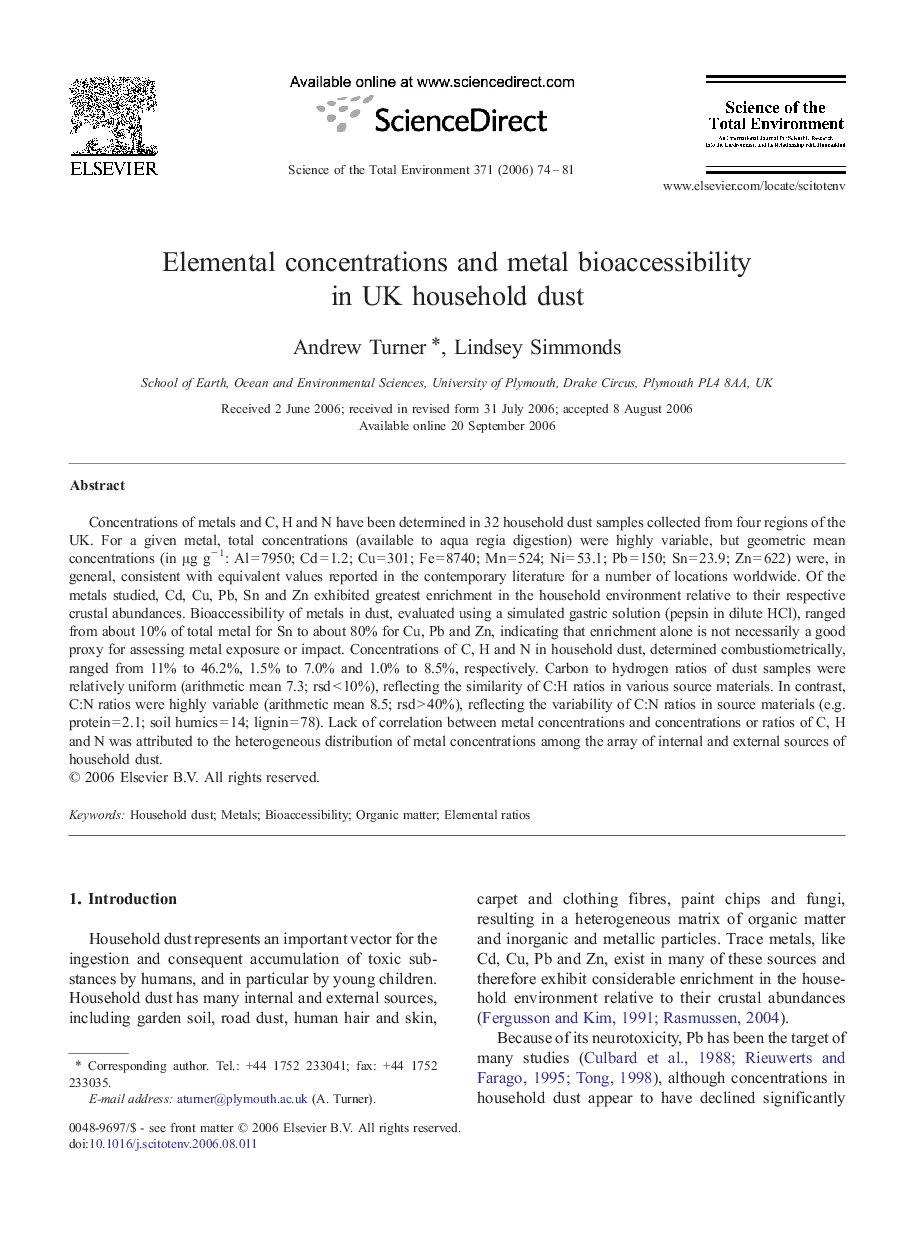| Article ID | Journal | Published Year | Pages | File Type |
|---|---|---|---|---|
| 4433698 | Science of The Total Environment | 2006 | 8 Pages |
Concentrations of metals and C, H and N have been determined in 32 household dust samples collected from four regions of the UK. For a given metal, total concentrations (available to aqua regia digestion) were highly variable, but geometric mean concentrations (in μg g− 1: Al = 7950; Cd = 1.2; Cu = 301; Fe = 8740; Mn = 524; Ni = 53.1; Pb = 150; Sn = 23.9; Zn = 622) were, in general, consistent with equivalent values reported in the contemporary literature for a number of locations worldwide. Of the metals studied, Cd, Cu, Pb, Sn and Zn exhibited greatest enrichment in the household environment relative to their respective crustal abundances. Bioaccessibility of metals in dust, evaluated using a simulated gastric solution (pepsin in dilute HCl), ranged from about 10% of total metal for Sn to about 80% for Cu, Pb and Zn, indicating that enrichment alone is not necessarily a good proxy for assessing metal exposure or impact. Concentrations of C, H and N in household dust, determined combustiometrically, ranged from 11% to 46.2%, 1.5% to 7.0% and 1.0% to 8.5%, respectively. Carbon to hydrogen ratios of dust samples were relatively uniform (arithmetic mean 7.3; rsd < 10%), reflecting the similarity of C:H ratios in various source materials. In contrast, C:N ratios were highly variable (arithmetic mean 8.5; rsd > 40%), reflecting the variability of C:N ratios in source materials (e.g. protein = 2.1; soil humics = 14; lignin = 78). Lack of correlation between metal concentrations and concentrations or ratios of C, H and N was attributed to the heterogeneous distribution of metal concentrations among the array of internal and external sources of household dust.
